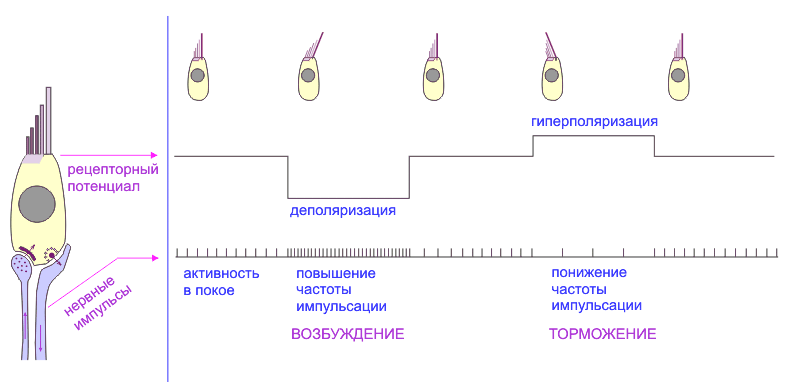Gene: [03q25/CP] ceruloplasmin (ferroxidase); hypoceruloplasminemia (aceruloplasminemia);
|
COM |
Yang-1986, using the in situ hybridization on chromosomes, showed the localization of CP gene to be limited by the segment q25. Less precise old localization, 3q23-25, which is indicated in the GDB and HGM catalogues, probably must be abandoned now." |
|
FUN |
The main function of CP is thought to consist in binding and transporting copper, because 95% of its serum amount is bound with this protein (six copper ions are tightly bound to the specific sites and up to 10 other atoms are more slightly bound on each CP molecule). Beside this enzymatic activity, CP exhibits three other ones - ferroxidase (see also GEM:03q21/TF), amine oxidase, and superoxide dismutase - and shows the characteristics of markers of acute inflammation responses (its level in serum is increased two to three times during inflammation, as is the case for other acute-phase reactants)." |
|
MOP |
[1] Ceruloplasmin is synthesized in liver as a single-strand product, 19
+ 1046 amino acid residues in length, where the first 19 amino acids
represent a leader peptide (the length of the functional mRNA is about
3.5 kb). The peptide undergoes the posttranslational processing; the
mature product is found in the fraction of serum alpha-2 globulins as
a glycoprotein (of azure color) with MM about 132 kD.
[2] Triplication, i.e. a 350-amino acid domain repeated three times, is characteristic for CP protein. The pairwise comparison of the domains have revealed that about 40-45% of amino acids in the three domains are identical (Ortel-1984). Detailed analysis of the structure of individual domains suggests an existence of several subdomains in each domain, their differences reflecting the structural and functional peculiarities of different types of copper-binding sites. There are three types of these subdomains, with two, one, and 2-3 sites per molecule for types I, II, and III, respectively (for a review, see: Owen CA, Biochemical Aspects of Copper: Copper Proteins, Ceruloplasmin and Copper Protein Binding, Noyes, Park Ridge, NJ, 1982)." |
|
EVO |
From the evolutionary point of view, it is interesting that CP shows a relatively high homology with two clotting factors: V and VIII (GEM:01q2/F5, GEM:0Xq28/F8C). All the three proteins are likely to be components of a single multigene family." |
|
MUT |
At least three codominant alleles of CP gene are known. They are identified with the use of electrophoresis, mainly in American Blacks. However, both influence of this genetic polymorphism on the ceruloplasmin functions and mechanisms of dysfunctions in some pathologies remain unclear." |
|
PAT |
Familial hypoceruloplasminemia is an autosomal dominant disease accounted for by a defect of one of CP functions, namely, the ferroxidase deficiency. This results in failure to oxidate transferring Fe(II) to Fe(III). An accumulation of iron rather than copper in liver and brain is a pathognomonic symptom for this pathology, in addition to blepharospasm, retinal degeneration, and basal ganglia lesions. In other words, the main function of ceruloplasmin (copper transport) is undamaged in this case, in contrast to Wilson-Konovalov disease (hepatocerebral dystrophy, HCD). Nevertheless the decreased serum ceruloplasmin is also pathognomonic for HCD, it is generally accepted that in this case the hypoceruloplasminemia is accounted for by copper-transporting ATPase gene, which is mapped to chr 13q: GEM:13q143/ATP7B." |
|
EAG |
The bovine transferrin and ceruloplasmin loci belong to the same linkage group. This was proposed to be the case for human genes, too. Indeed, Weitkamp-1983 demonstrated the conservativity of the close linkage between human TF and CP genes. Therefore, when the localization for TF gene in chromosome 3 was elucidated (Yang-1984), this represented also the primary mapping of CP. This localization for CP was later confirmed experimentally. This is just one example of the efficiency of the so called method of induced mapping." |
|
FAG |
A processed pseudogene of ceruloplasmin was found in chromosome 8 (GEM:08q2/CPP)." |
|
POL |
[1] Gene-specific DNA probe phCP1 (a 2.7 kb fragment) has been cloned
at PstI site in the plasmid pKT218;
-----------------------------
RFLP systems:
-------------
[1] PstI A-RFLP (Leppert-1987; Probe [1]): allele A1= 14.0 kb/(popul freq= 0.39); allele A2= 11.5/(0.61)" |
|
REF |
LOC,PRO "Baranov VS &: Chromosoma, 96, 60-66, 1987 PEP,EVO "Church &: PNAS, 81, 6934-6937, 1984 PEP,SEQ,MOP "Dwulet, Putnam: PNAS, 78, 2805-2809, 1981 PAT,POG,FUN "Edwards &: Clin Genet, 15, 311-316, 1979 LOC,LIN "Eiberg &: CCG, 37, (HGM7), 461, 1984 LOC,LIN "Eiberg, Mohr: CCG, 25, (HGM5), 149-150, 1979 PRO,SEQ,EXP "Gitlin JD: JBC, 263, 6281-6287, 1988 PAT,MUT,SEQ "Harris ZL &: PNAS, 92, N7, 2539-2543, 1995 PAT,POG,FUN "Kellermann, Walter: Humangenetik, 15, 84-86, 1972 PRO,SEQ,EXP "Koschinsky ML &: PNAS, 83, N14, 5086-5090, 1986 PRO,POL "Leppert &: CCG, 46, (HGM9), 648, 1987 PAT,POG,FUN "Matsuda &: Pediatr Res, 8, 821-824, 1974 PRO,SEQ,EXP "Mercer JFB, Grimes A: FEBS Lett, 203, N2, 185-190, 1986 LOC,PRO "Naylor &: CCG, 40, (HGM8), 711, 1985 PEP,SEQ,MOP "Ortel &: PNAS, 81, (Aug), 4761-4765, 1984 LOC,LIN "Robson EB &: Ann Hum Genet, 29, 325-336, 1966 LOC,PRO "Royle NJ &: Somat Cell Mol Genet, 13, 285-292, 1987 PAT,POG,FUN "Shokeir, Shreffler: Biochem Genet, 4, 517-528, 1970 PAT,POG,FUN "Shreffler &: Biochem Genet, 1, 101-116, 1967 PEP,SEQ,MOP "Takahashi N &: PNAS, 81, 390-394, 1984 PEP,SEQ,MOP "Takahashi N &: PNAS, 80, 115-119, 1983 LOC,LIN "Weitkamp LR: Ann Hum Genet, 47, 293-297, 1983 PRO,SEQ,LOC,FAG,EXP,POL "Yang F &: PNAS, 83, N10, 3257-3261, 1986 |
|
KEY |
hem, trp, serp, ion, neu |
|
CLA |
coding, basic |
|
LOC |
03 q25 |
|
MIM |
MIM: 117700 |
|
EZN |
ENZYME: 1.16.3.1 |
Смотрите также:

